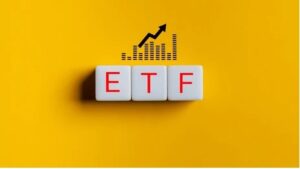Invest Smarter, Not Harder: Demystifying ETFs
An Exchange-Traded Fund (ETF) is an investment fund that trades on stock exchanges, much like a stock. ETFs hold a collection of assets such as stocks, bonds, or commodities, providing investors a way to diversify their portfolios without purchasing individual securities.

How ETFs Work
- Structure: ETFs pool money from multiple investors to invest in a diversified portfolio of assets.
- Trading: They are bought and sold on exchanges at market prices throughout the trading day, unlike mutual funds which are priced at the end of the day.
- Flexibility: ETFs track an index (e.g., S&P 500), sector, commodity, or specific strategy.
- Liquidity: Investors can buy or sell ETFs anytime during market hours, just like regular stocks.
- Costs: They typically have lower expense ratios compared to mutual funds.

Types of ETFs
-
Stock ETFs: Stock ETFs are designed to track a particular index or sector of the stock market. These ETFs provide exposure to a basket of stocks, offering diversification without the need to buy individual shares.
-
Bond ETFs: Bond ETFs focus on fixed-income securities, providing a convenient way to invest in bonds without directly purchasing them.
-
Commodity ETFs: Commodity ETFs track the performance of raw materials like gold, oil, or agricultural products. They offer a way to invest in commodities without physically owning them.
-
Real Estate ETFs (REIT ETFs): Real Estate ETFs invest in Real Estate Investment Trusts (REITs) or companies involved in real estate operations. They provide exposure to real estate markets without the need to buy property directly.
-
Inverse and Leveraged ETFs: Designed to profit from declines in an index by moving in the opposite direction.
-
Currency ETFs: Currency ETFs track the performance of specific currencies or baskets of currencies. They’re often used to hedge currency risk or speculate on currency movements.
-
Actively Managed ETFs: Unlike the most ETFs, which track an index, actively managed ETFs rely on fund managers to make investment decisions. These ETFs aim to outperform the market rather than simply mirror it.
-
International ETFs : International ETFs provide exposure to global markets outside of an investor’s home country. They can focus on specific regions (e.g., Asia, Europe) or emerging markets.
Benefits of Investing in ETFs
ETFs offer numerous advantages that make them a popular choice for investors:
-
Diversification: ETFs provide exposure to a broad range of assets, reducing the risk associated with individual securities.
-
Liquidity: Traded on stock exchanges, ETFs can be bought and sold throughout the trading day.
-
Cost-Effectiveness: Most ETFs have lower expense ratios compared to mutual funds.
-
Transparency: Holdings of most ETFs are disclosed daily, allowing investors to know exactly what they own.
-
Flexibility: With ETFs, investors can target specific sectors, regions, or investment themes.
-
Tax Efficiency: Due to their unique structure, ETFs typically generate fewer capital gains than mutual funds.
-
Accessibility: ETFs cater to a wide range of investment strategies, from conservative income generation to aggressive growth.
Choosing the Right ETF for You
When selecting an ETF, consider the following:
-
Investment Goals: Are you looking for growth, income, or diversification?
-
Risk Tolerance: Some ETFs, like leveraged or thematic ETFs, carry higher risks.
-
Expense Ratios: Lower-cost ETFs can save money in the long term.
-
Market Exposure: Decide whether you need broad exposure or focus on specific sectors, regions, or trends.
ETFs have revolutionized investing, offering tools to meet nearly every investment need. By understanding the different types of ETFs, you can build a portfolio that aligns with your financial goals and risk tolerance.
What type of ETF do you think fits your investment strategy? Let us know in the comments below or explore more insights on SmartStockInsights!
https://smartstockinsights.in/